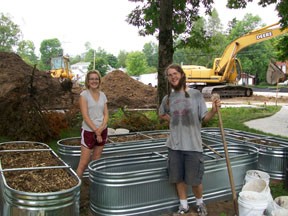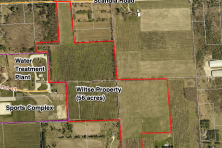Soil Remediation Plan at The Ridges
- Share
- Tweet
- Pin
- Share

A profile of the soil at The Ridges Sanctuary’s new property shows the soil contamination, a result of many years of fish boils on the property.
The Ridges Sanctuary recently began soil remediation to prepare their new property for the trailhead and interpretive center.
During the purchase of the Sandpiper property, a study showed approximately 800 tons of contaminated soil – 200 tons with levels high enough to require remediation – as a result of the fish boils that had been held on the property for many years. The soil remediation process has been a model of community problem-solving based on environmental research and education.

Students from Lawrence University participated in the soil remediation process, conducting a comparative study of three remediation techniques.
The Ridges worked with geologist Roger Kuhns, the DNR, Omni Professional Environmental Associates, and The Boldt Company to formulate a plan that was implemented on July 17 and 18.
The soil will be treated through phytoremediation, a process where bacteria and plants naturally breakdown the petroleum products. When the first set of tests showed all of the contaminated soil had been removed, the excavated site was filled using the dredging material from Baileys Harbor Marina. Tests on the dredging material that had been sitting for two years showed that it was appropriate to be reused as fill for construction projects.

The Ridges Sanctuary is restoring a ridge along the northeast side of the former Sandpiper property, the future site of its new trailhead and interpretive center.
Eventually, a layer of topsoil will be added to a restored ridge and planted with native vegetation. The compost, wood chips, and native vegetation will create a biomass to stimulate bacteria growth to break down remaining fuel oil.
The site remediation has also provided an opportunity for collaborative research. The Ridges provided access to the site to Lawrence University students for a comparative study of three remediation techniques. Using 1 cubic yard of soil per sample, the students will compare the effectiveness of using different amounts of compost.
For more information visit http://www.ridgessanctuary.org or call 920.839.2802.


